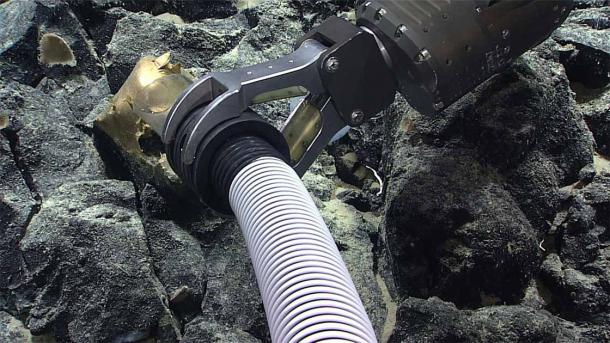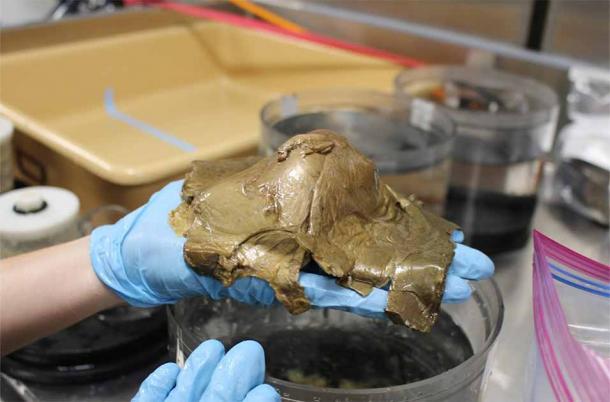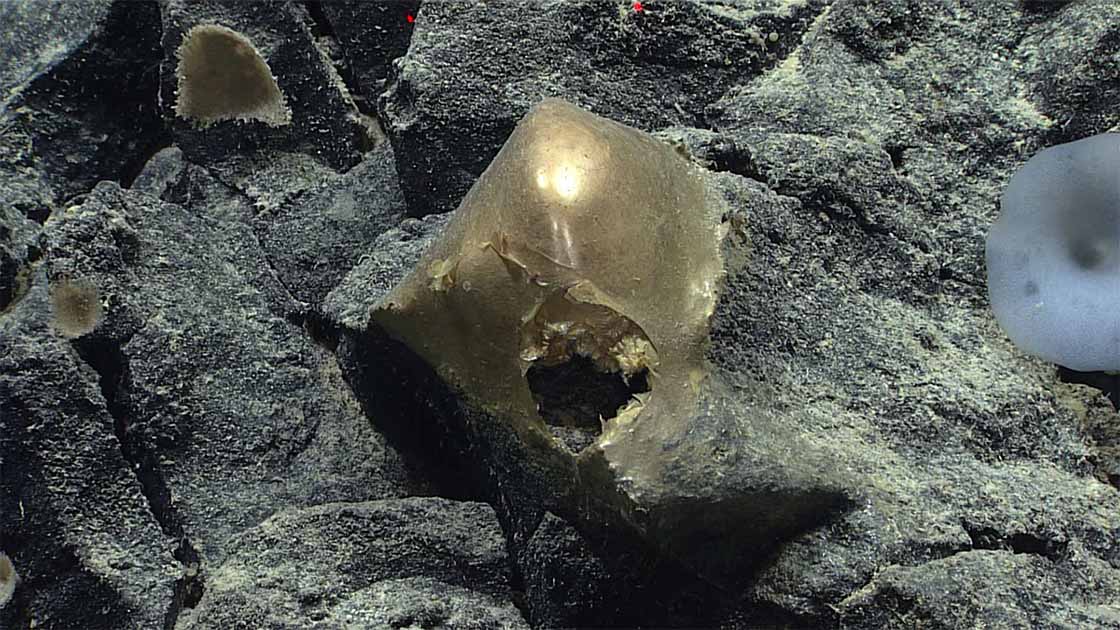Scientists Find ‘Weirdly Unfamiliar Golden Orb’ on Alaska Sea Floor
Scientists recently monitoring the filming activity of a remotely operated vehicle (ROV) deployed off the coast of Alaska spotted something mysterious and otherworldly. While examining deep sea imagery beamed back in conjunction with the Seascape Alaska 5 mission, which is sponsored by the United States’ National Oceanic and Atmospheric Administration (NOAA), the researchers saw what appeared to be a glowing golden orb attached to a rock on the ocean floor.
This discovery was most unexpected, since the shimmering orb does not match any entity, physical object or substance already known to science. An object of this nature has never before been seen anywhere on Earth, leaving scientists scrambling for answers to explain this strange anomaly.
This golden orb, likely an egg casing, struck an imaginative chord for many watching yesterday.
Today we dive on Denson Seamount. ROVs are launching & will remain on the seafloor until ~ 3:45pm ADKT/7:45pm EDT.
Join us! https://t.co/ScOhpINB18#Okeanos #seascapealaska #explore pic.twitter.com/Eq1sYeVQrr
— NOAA Ocean Exploration (@oceanexplorer) August 31, 2023
Is the Golden Orb an Egg, Sponge or Brand New Species?
The shiny orb was found at a depth of two miles (3.1 km), in the Gulf of Alaska just off the southern coast of America’s 49th state. Because of its smooth and lustrous exterior, the Seascape Alaska 5 scientists couldn’t be sure at first if the golden orb was made from metal or organic materials.
- Dark Mysteries of the Deep: Ancient Divers and their Dangerous Journeys
- Challenges and Triumphs in Underwater Archaeology
This part of the mystery was solved quickly, as the ROV’s robot arm poked and prodded the supposed golden orb only to discover that it was soft, fleshy and undoubtedly biological in origin. The current working theory is that the golden orb is some type of unknown coral, a detached or discarded part of a sponge, or the remnants of an egg casing left behind after a hatching.
One intriguing element of this find is that the orb had a fairly large circular hole in its side. “Something tried to get in… or to get out,” one NOAA researcher watching the ROV camera’s live steam was heard to mutter, according to the Miami Herald.
In fact, if the orb is the remains of an egg casing, the hole might very well have been made when the creature inside broke out. But as of now, the researchers don’t have a clue as to what that creature might have been, assuming it actually exists.

The robotic arm retrieving the weirdly unfamiliar golden orb on Alaska sea floor. (NOAA Ocean Exploration)
Robot Retrieves Golden Orb Samples from Ocean Floor
They may not have to wait too long to find out if there was such an animal, however. The ROV deployed during the Seascape Alaska 5 project came fully equipped to retrieve organic samples from the ocean bottom. In this case it used its robot arm to carefully and neatly scoop up the strange object and carry it back to the researchers on the NOAA vessel tracking the deep-sea ROV’s activities from above.
The scientists still did not recognize the object, even when they had it in their laboratories back on their ship. But they have taken DNA samples. Once the results of the genetic tests come back they should be able to identify the animal that functioned as the source of the glowing golden blob.
This assumes, of course, that the orb actually came from a known animal, and not from a deep ocean species that has never been spotted before. Consulted by the Daily Mail, Kerry Howell, a professor of deep-sea ecology at the University of Plymouth, called the object “weird” and confirmed that it was totally unfamiliar to the scientific community.
“In my 20 years exploring the deep sea, I have not seen anything like that,” she marveled. “It's always exciting to see new things and I will wait eagerly for the analysis on the sample to understand what it actually is. There are many, many undiscovered species in the deep sea, so this could be related to a new species quite easily.”

The mysterious golden orb recovered in August after been taken on board. (NOAA Ocean Exploration)
Boldly Going Where No One Has Gone Before
As of now, humans have only explored and charted about five percent of the world’s sea floors. Since oceans cover 70 percent of the Earth, this means that two-thirds of the surface of the planet has never been visited by people or even by remote-controlled cameras.
- Unidentified Object Off U.S. Coast: A 17th-Century Submersible?
- Ancient Submerged Cities: Rethinking Our Ancestry
Missions like Seascape Alaska 5 are designed to remedy this situation. Over the course of this project, the National Oceanic and Atmospheric Administration (NOAA) expedition team has been remotely exploring marine habitats off the shore of Alaska in the waters between the cities of Kodiak and Seward, a distance covering about 185 miles (300 km). The waters are deep in this northern region of the Pacific, and the researchers are scanning sites between 650 feet (200 m) and 20,000 feet (six km) below the ocean surface.
In the words of NOAA, the purpose of the mission is to “explore deep-sea coral and sponge habitats, fish habitats, chemosynthetic communities, and the water column and to improve knowledge of past and potential geohazards.”
The explorations of the ROV, and the words of the scientists guiding it and evaluating its discoveries, are being transmitted live on the internet until September 15th, when the Seascape Alaska 5 project concludes this stage of its mission. The feeds can be accessed for free from anywhere in the world between 12 pm and 9 pm Eastern Daylight Time on NOAA’s Ocean Explorer website.
Given how little is known about what is happening at deep-ocean sites, it is entirely possible that the Seascape Alaska 5 will uncover further anomalies very soon. They may even find another golden orb to match the one they’ve already collected, perhaps in proximity to the animals that actually create these fascinating and previously unknown specimens.
Top image: The unidentified golden orb discovered on the Alaskan sea floor. Source: NOAA Ocean Exploration
By Nathan Falde

















